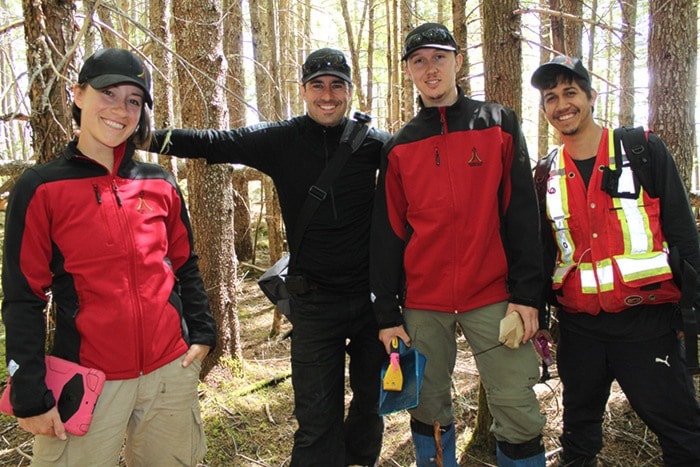Terrace city council recently received an update on what could be Canada's first major geothermal power plant constructed somewhere in the Lakelse Lake area, where a plenitude of hot springs have alerted a Calgary-based company to the potential for low impact power generation.
Calgary-based Borealis Geopower received the necessary permits to begin exploration on their Lakelse Geothermal Project back in January for a 2,800 hectare area in which to assess the possibility of building a 15-megawatt power plant that works by converting the heat drawn from hot water into electricity and then cycling the water back underground.
A small Borealis crew began their work in early June within an area which extends from south of Lakelse Lake and up the east side of Hwy 37, with a couple small test sites located within the Skeena Industrial Development Park.
“We're looking for subsurface heat, subsurface water and subsurface rocks with permeability,” said Chief Executive Officer Tim Thompson at the committee of the whole meeting June 20.
“We're going to collect and collate thousands and thousands of data files. We're going to have, I would suggest, the single most accurate map of Lakelse that you've ever seen.
“You'll be able to spin this thing in 3D space, you'll know everything about elevation change,” he said, adding that it will also show gas-level measurements.
Thompson said the permitting would have been impossible without the partnership of the Kitselas First Nation who is partnering on the project and in whose traditional territory they are working.
The other partner, who is financing the project, is Enbridge Inc.
During the question period, mayor Dave Pernarowski asked about how the reception has been.
“Our partner is Enbridge so it runs hot and cold,” Thompson said. “They like the project but they don't necessarily like the partner... the discussion gets visceral.”
Borealis chief geologist Craig Dunn, who accompanied Thompson to council said that once people learn a bit more about the zero-emission potential and tiny footprint geothermal projects he gets a positive response. Dunn and his crew have had to approach land owners to ask them for access to private land in some cases, and he has to ensure them that the exploration is non-invasive.
“When people hear about the project they tend to agree with it more,” he said.
Thompson, who oversees the business end of things, said there will be two decision points between as they proceed with their exploration. Currently they are in the first phase of surface exploration, which will be followed by the initial core hole sample drilling, and then deeper probing with slimholes to try to “touch” the reservoir of hot water deep below the surface.
Thompson said that they will have hit the $5 million mark on investment by projected end date of their exploration work which is November 2015, so if they don't see a promising configuration of land features and hot water reservoirs then they will pull the plug on the project, possibly before that time.
Borealis has withdrawn from other projects in the past including one they started in the Liard reservoir north of Fort Nelson, but they say they are gunning to start the first commercial geothermal plant in Canada.
“People are shocked that we have zero megawatts in Canada,” said Dunn. “This project, given where it is in exploration, has a real shot at making it.”
The total amount of energy generated would be 15 megawatts, with the possibility of increasing capacity at a future date, said Thompson.
Whether this happens or not depends on what the company sees through their studies.
